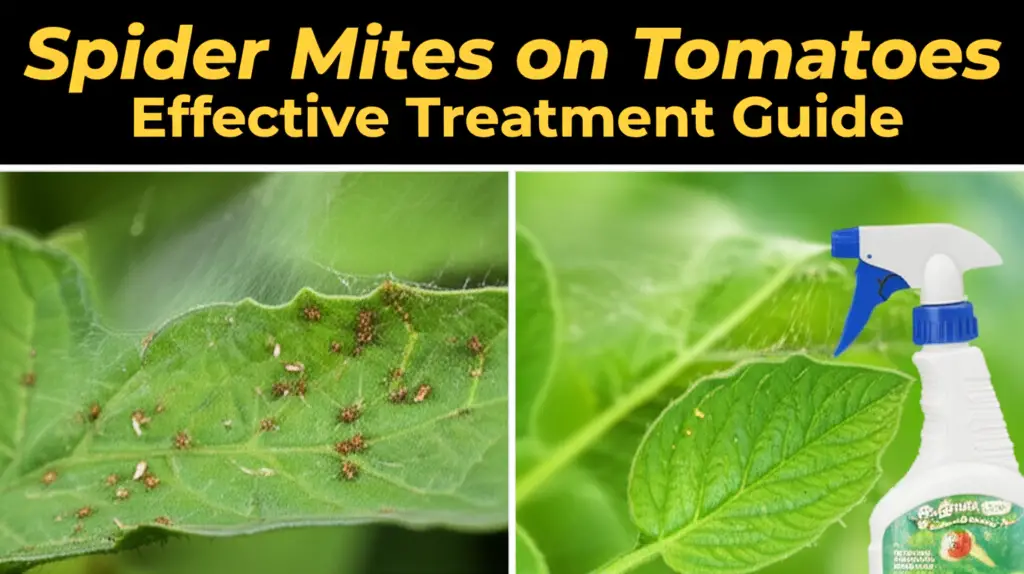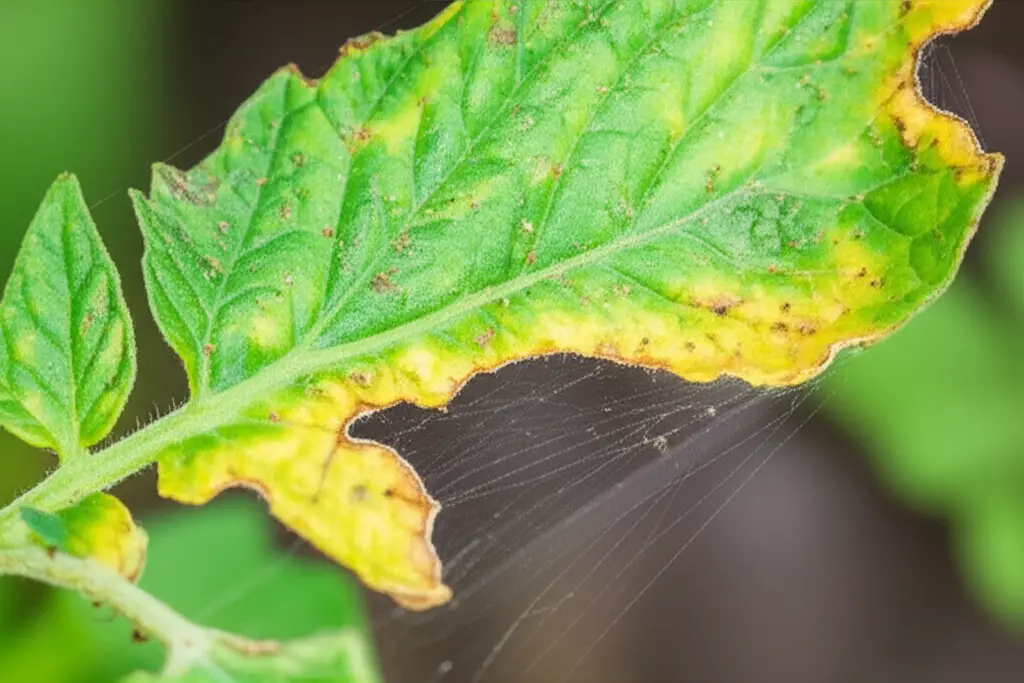How to Treat Spider Mites on Tomato Plants: A Comprehensive Guide

Summary: This guide provides a comprehensive overview of how to identify, prevent, and treat spider mites on your tomato plants, ensuring a healthy harvest. We’ll explore various organic and chemical treatment options, along with preventative measures to keep these pests at bay.
Introduction: The Tiny Terror of Tomato Plants
Spider mites are a common pest that can wreak havoc on tomato plants, leading to stunted growth, reduced yields, and even plant death if left untreated. These tiny arachnids are difficult to see with the naked eye, often appearing as small, moving dots on the underside of leaves. Early detection and prompt treatment are crucial for protecting your tomato crop.
Identifying Spider Mites on Tomato Plants
Before you begin treatment, it’s crucial to confirm that spider mites are the culprits. Look for these telltale signs:
- Stippling: Tiny, pale yellow or white speckles on the leaves, which is a result of the mites feeding on the plant’s cells.
- Webbing: Fine, silken webs on the undersides of leaves, stems, and fruit. Heavy infestations will be more noticeable.
- Discoloration: Leaves may turn yellow, bronze, or brown and eventually dry up and fall off.
- Visible Mites: Although small, you might be able to see tiny moving dots with a magnifying glass. They can vary in color from red, green, yellow, to brown.
Spider Mite Life Cycle: Understanding the Enemy
Understanding the spider mite life cycle is key to effective treatment. They progress through several stages: egg, larva, nymph, and adult. The entire cycle can be completed in as little as a week in warm conditions, leading to rapid population explosions.
Preventing Spider Mites: Proactive Steps for Healthy Plants
Prevention is the best defense against spider mites. Implementing these strategies can significantly reduce the risk of infestation:
- Regular Monitoring: Inspect your tomato plants regularly, especially the undersides of leaves, for signs of mites.
- Healthy Plants: Strong, healthy plants are better equipped to withstand pest attacks. Ensure adequate watering, fertilization, and sunlight.
- Proper Spacing: Avoid overcrowding plants as this creates a humid environment conducive to spider mite proliferation.
- Cleanliness: Remove fallen leaves and debris from around the plants as these can harbor mites.
- Predatory Insects: Introduce beneficial insects like ladybugs and lacewings that feed on spider mites. (Learn more about beneficial insects in your garden)
Spider Mite Treatment Options: Organic and Chemical Approaches
Once an infestation is identified, prompt action is necessary. Several organic and chemical treatment options are available:
Organic Treatments:
- Water Spray: A strong blast of water from a hose can dislodge mites from the plant. Repeat regularly.
- Insecticidal Soap: This readily available solution effectively controls mites by suffocating them. Follow product instructions carefully. (Find our recommended insecticidal soaps here)
- Neem Oil: A natural pesticide that disrupts the mite’s life cycle. Apply thoroughly to all plant surfaces, including the undersides of leaves. (Explore our neem oil products)
- Rubbing Alcohol: Dilute isopropyl alcohol with water and spray directly on the mites. Test on a small area first to ensure it doesn’t damage the plant.
Chemical Treatments:
- Miticides: Several miticides are available specifically designed to control spider mites. Choose a product labelled for use on vegetables. Always follow the instructions carefully and use appropriate safety precautions.
- Insecticides: Some broad-spectrum insecticides may also control spider mites, but they can also harm beneficial insects. Use these as a last resort.
Comparing Treatment Options:
| Treatment | Effectiveness | Cost | Environmental Impact |
|---|---|---|---|
| Water Spray | Moderate | Low | Low |
| Insecticidal Soap | High | Low | Low |
| Neem Oil | High | Moderate | Low |
| Rubbing Alcohol | Moderate | Low | Low |
| Miticides | High | Moderate to High | Moderate to High |
| Insecticides | High | Moderate to High | Moderate to High |
FAQs: Common Questions About Spider Mites on Tomato Plants
Q: How do I know if my tomato plants have spider mites?
A: Look for stippling on the leaves, fine webbing, discoloration, and potentially visible mites using a magnifying glass.
Q: What is the best way to prevent spider mites?
A: Regular monitoring, healthy plants, proper spacing, cleanliness, and introducing predatory insects are effective prevention strategies.
Q: Can I use dish soap to treat spider mites?
A: While dish soap can sometimes work, it can also damage plants. Insecticidal soap is formulated specifically for plants and is a safer option.
Q: How often should I apply treatments?
A: The frequency of treatment depends on the severity of the infestation and the specific product used. Always follow the product instructions.
Q: Are spider mites harmful to humans?
A: Spider mites primarily feed on plants and are not generally harmful to humans. However, some people may experience skin irritation from contact.
Conclusion: Winning the Battle Against Spider Mites
Spider mites can be a formidable pest, but with vigilant monitoring and effective treatment strategies, you can protect your tomato plants and enjoy a healthy harvest. Prioritize prevention, choose the treatment option that best suits your needs, and don’t hesitate to take action at the first sign of infestation. By understanding the enemy and taking proactive steps, you can win the battle against spider mites and keep your tomato plants thriving.

